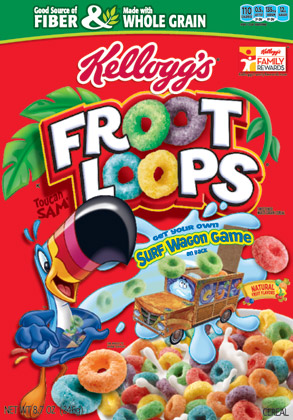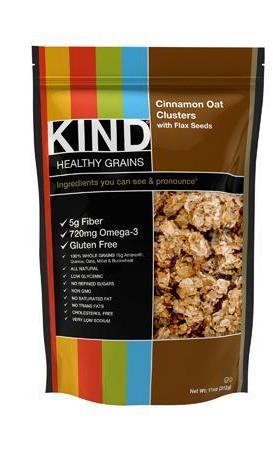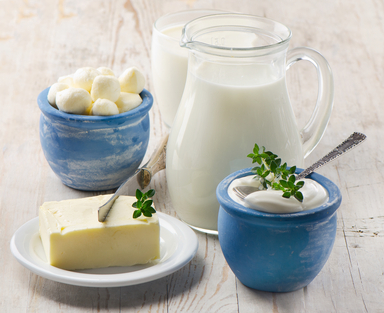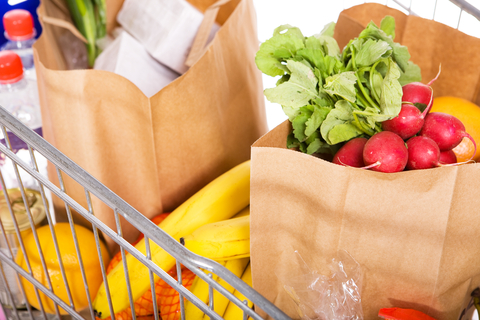How to eat processed food. Guest Post by Danielle Omar, MS, RD
My friend and colleague Danielle Omar has been a contributor to Flashfree for some time now. When I read her post “How to Eat Processed Food” on her Food Confidence blog, I knew that I wanted to share it here. Sure, it’s odd that a registered dietician is actually sharing tips on how to eat processed foods versus why you need to avoid processed food at all cost, however, Danielle has taken a unique approach that regular readers of Flashfree and Guyside will appreciate.
Thanks for allowing me to cross-post this terrific information, Danielle!
I eat processed food. And so do you. It’s almost impossible not to. Food is “processed” as a matter of course to get it from the farm (or factory) to your table. But wait, if you’ve done my detox or worked with me privately you know I’m all about clean eating and avoiding processed food.
So what’s the deal? Well, let’s start with what the word processed really means. Aside from what you can just pick and eat, most foods are processed in some way. At the same time, there are foods that people call “healthy” that to me are so processed they’re not even food.
Look at heart healthy olive oil. It needs to be processed in order for the oil to be extracted from it, right? So how do we differentiate between the good-processed and the bad-processed foods? You might say that a good-processed oil is one that is naturally pressed and unrefined. A bad-processed oil is one that is chemically pressed and refined. Because we live in choice-overload at the grocery store it can be confusing. My clients send me emails all the time asking are these crackers better than those? Which yogurt is better? And one of my favorites, would YOU eat this?
So let’s clear up the confusion about the “P” word, starting with what I consider to be good-processed and bad-processed foods. Oh, and I can’t speak to every single food out there so here’s just a sampling of whatI eat.
Good-processed foods
- bagged veggies (yes, those are processed)
- frozen fruit and plain frozen veggies
- miso
- oils (as noted above)
- raw or dry roasted nuts and seeds (I’m not talking Planters)
- oats and plain oatmeal
- single whole grains (i.e., quinoa, millet, wild rice, etc.)
- canned beans (BPA-free like Eden foods) OR boxed beans (Whole Foods has these)
- tuna and salmon in a can (high quality stuff like Vital Choice, Tonnino, Wild Planet)
- dried fruit (no sugar added)
- Plain and organic yogurt (this is a sketchy area; lots of good yogurt that’s not organic or plain)
- goat cheese
- salsa
- granola (like KIND, Purely Elizabeth)
- crisp bread crackers (like WASA, Orgran, Finncrisp)
- energy bars (like Lara, KIND, 22Days)
I’ve got a bit of a hierarchy going with the good-processed foods. For one, I look for minimally processed items. These potentially boxed or bagged foods contain ingredients that I recognize and that I would use at home to prepare the food myself. Yes, this means that I take a bit more time while shopping to read the ingredients. I don’t mind this because the grocery store is my partner in eating clean. It also means that just because a food is gluten-free or is made with quinoa or greens — that doesn’t mean it’s clean eats. Take, for example, this roasted garlic chicken frozen dinner, a gluten-free gem made with spinach from Lean Cuisine.
Ingredients: Water, cooked chicken tenderloin (chicken tenderloins, water, seasoning), modified corn starch, sugar, potassium chloride, yeast extract, dextrose, spice, onion powder, garlic powder, paprika), soybean oil, isolated soy protein, sodium phosphates), spinach, skim milk, onions, carrots, 2% or less of modified corn starch, cheese flavor (cultured milk, salt, enzymes), soybean oil, white white, butterfat, Asiago cheese, salt, cheese flavor (cheddar cheese, cultured milk, salt, enzymes), water, salt, enzymes, cultures, phosphoric acid, xantham gum, seasoning, (autolyzed extract, flavors, water, chicken powder, chicken fat, sugar, sodium lactate, sodium, phosphate lactic acid) potassium chloride, roasted garlic, dehydrated onions, basil, enzyme modified Parmesan cheese, puree, whey, yeast extract, whey, carrageenan, spices, caramel color, chicken fat flavor, cultured whey, turmeric.
I don’t cook with many of these ingredients. For me, I just don’t want the added chemicals (read: toxins) clogging up my cells. I’ve got enough of those coming in from just living and breathing. I’m thinking you probably don’t either. So my answer to this is simple: I don’t buy the Lean Cuisine. Instead, I buy some chicken breasts, sprinkle on some spices, and cook at 375 for about 25 minutes. It really is that easy. I can do it and I don’t even eat chicken.
Bad-Processed Foods
The list of these foods is long and I will not even try to do it justice here. I will just say that these foods areextensively processed in order to be edible, they are not found as is in nature, or they are foods processed using chemicals that I don’t want to be eating. I’m talking mostly about GMOs, additives, preservatives and artificial flavorings. Now some in the food industry might argue that the healthiest food in the world is processed. And that food fortification plays a large role in meeting our nutrient needs. And that processing helps enhance and preserve food quality. All of that may be true. Whole grains are processed and I encourage you to eat them. However, you can get your whole grains in their natural state (see my good-processed list above). You don’t have to buy into this (yes, this is an extreme example):
 Ingredients: Sugar, corn flour blend (whole grain yellow corn flour, degerminated yellow corn flour), wheat flour, whole grain oat flour, oat fiber, soluble corn fiber, contains 2% or less of partially hydrogenated vegetable oil (coconut, soybean and/or cottonseed), salt, red 40, natural flavor, blue 2, turmeric color, yellow 6, annatto color, blue 1, BHT , Vitamin C (sodium ascorbate and ascorbic acid), niacinamide, reduced iron, zinc oxide, vitamin B6 (pyridoxine hydrochloride), vitamin B2 (riboflavin), vitamin B1 (thiamin hydrochloride), vitamin A palmitate, folic acid, vitamin D, vitamin B12.
Ingredients: Sugar, corn flour blend (whole grain yellow corn flour, degerminated yellow corn flour), wheat flour, whole grain oat flour, oat fiber, soluble corn fiber, contains 2% or less of partially hydrogenated vegetable oil (coconut, soybean and/or cottonseed), salt, red 40, natural flavor, blue 2, turmeric color, yellow 6, annatto color, blue 1, BHT , Vitamin C (sodium ascorbate and ascorbic acid), niacinamide, reduced iron, zinc oxide, vitamin B6 (pyridoxine hydrochloride), vitamin B2 (riboflavin), vitamin B1 (thiamin hydrochloride), vitamin A palmitate, folic acid, vitamin D, vitamin B12.
All of you Froot Loops lovers are cringing right now, aren’t you? Please don’t be fooled into thinking that a bowl of bad-processed cereal in the morning is good for you because it has whole grains in it. Because it also has red 40 and blue 2. Oh, and yellow 6. And blue 1.
 If whole grains are what you’re after, it’s save to say that this would be a cleaner, good-processed choice:
If whole grains are what you’re after, it’s save to say that this would be a cleaner, good-processed choice:
Ingredients: Whole grains (gluten free oats, brown rice, buckwheat, amaranth, millet, quinoa), evaporated cane juice, flax seeds, chicory root fiber, canola oil, molasses, cinnamon, sea salt, Vitamin E
Processed food does not have to be a curse on society. It can be a part of a healthy, clean eating lifestyle — if you choose good-processed foods most of the time. But to me, eating clean is about more than just choosing the right nutrients on an ingredient list. It’s about how your food is prepared. It’s about eating food mostly in it’s natural state.
Yes, processed food is convenient and sometimes necessary, but preparing your own food is a necessity, too. One that takes a little more time, a little more confidence and a little more knowledge of cooking than does tearing open and bag or box and digging in. But I promise, the more you do it, the better you’ll get at it, and the more you’ll appreciate it.
Read MoreWednesday Bubble: weight loss – It’s in the sea! Guest post by Danielle Omar, RD
Not bursting any bubbles this week! Rather, I am hoping that guest author Danielle Omar, RD can provide a unique perspective on weight loss, fiber and one of our biggest resources: the sea. Danielle is a fellow Advisory Board member and when we met, we realized that we had a lot in common, especially when it came to women and eating and midlife. So please, welcome Danielle and show some love!
 Is fiber the newest weight loss panacea? Perhaps! As a nutritionist, I’ve been recommending soluble fiber for years for digestive and heart health, but its role in weight loss and hunger control are what is getting recent attention. As part of a new wave in obesity research, scientists are now developing foods that contain specific types of fiber that may help you lose weight just by eating them.
Is fiber the newest weight loss panacea? Perhaps! As a nutritionist, I’ve been recommending soluble fiber for years for digestive and heart health, but its role in weight loss and hunger control are what is getting recent attention. As part of a new wave in obesity research, scientists are now developing foods that contain specific types of fiber that may help you lose weight just by eating them.
Glucomannan, which is extracted from the Asian plant Konjac or elephant yam, has been around for a while. It’s known for its ability to expand up to 50 times its own water weight. You are already eating it in many foods (the food industry uses it as a thickening agent), but you may also be familiar with the wildly popular shirataki noodles. Made from Glucomannan, they’ve reached cult status in “low carb” circles for their ability to mimic pasta noodles, without all the carbs.
Researchers at both Chicago Rush University College of Nursing and The University of Connecticut have authored review articles finding the fiber in Glucomannan to promote weight loss and satiety, help lower LDL cholesterol and triglycerides, and help balance blood sugar levels. Although long-term studies are needed, the results are promising.
Another new player in the fiber game is alginate, a fiber found in the sea vegetable kelp. Alginate has been getting recent praise for its ability to reduce the absorption of fat in the diet by up to 75%. Researchers are claiming that alginate stops the body from absorbing fat better than the over-the-counter obesity treatment options currently available (like Alli). Researchers have not started testing on humans, but preliminary results are creating quite a buzz.
In the meantime, why not do some research of your own? Sea veggies are not only high in soluble fiber, they’re also a great source of vitamins and minerals and a natural source of iodine, which is important for thyroid health. So head to the grocery store and pick yourself up some sea vegetables! The most popular kinds include:
Nori: dark purple-black, usually bought in sheets, as seen in sushi rolls
Kelp: great as a salt substitute, available in flake form
Hijiki: looks like black wiry pasta, needs no cooking, just soak and soften – add to salads
Kombu and Wakame: found in longs sheets, as seen in miso soup or salads; sweet flavor
Arame: lacy texture, sweet and mild flavor
Dulse: soft, chewy texture; great addition to soup or raw as flakes
For more information and easy recipes using sea vegetables, click here.
Have you tried sea greens? What do you think?
About Danielle…Danielle Omar, MS, RD is a Registered Dietitian with ten years of experience promoting food confidence through healthy living and smart eating. She brings real-life understanding to her nutrition consulting practice and has counseled hundreds of people in weight management, wellness, and sports performance. Danielle uses her unique approach, Live It, learn It, Get It to create powerful health transformations and real food confidence in her clients’ lives.
In addition to private counseling, Danielle serves as an adjunct professor in nutrition science at the university level. She has been featured on local news and media stations and has conducted interviews for entertainment outlets such as The Washington Post and the Food Network. Danielle is active in social media and delivers a unique perspective on her Food Confidence blog, which focuses on mindful eating techniques and eat-smart tips.
Read MoreNew Year…farewell
Phew! What a ride the past six plus years have been. And like everything that’s worthwhile, it’s important to know when to step away. And so, I must bid adieu to Flashfree to make room for new writing, new reporting and a new journey.
As an early adopter in the menopausal blogging space, I’ve watched a burgeoning interest among women who are entering or in the middle of the menopause transition. Mostly, I’ve received validation time and again that open dialogue and self-care are essential as we age. And while Flashfree has mostly stayed away from the personal, I have experienced my own growth in terms of gaining a better understanding of my body and the changes that it’s going through, my mental health and tolerance (or intolerance for stress) and the factors that are needed to live life to the fullest. I hope that you have likewise, gained knowledge and a sense of self along this ride that we’ve been on.
Several people who I know and love suggested that I leave you with a list of my favorite posts. I’d rather leave the Archives to you to discover and find them on your own. The Flashfree Archives will remain accessible although some of the information contained within may eventually become dated.
Finally, I want to take this opportunity to thank you and others who’ve supported me along with way. And in particular, I would love to thank and acknowledge the multiple guest bloggers that have contributed to Flashfree: Bob LeDrew (who is heading on to broader pastures with Guyside) Danny Brown, Richard Becker, my brother, Andrew Scherer, Wendy Goldman Scherer, Patti Digh, Amy Zimmerman, Walker Thornton, Danielle Omar, Cyma Shapiro, Nina Perez, D.A. Wolf, Susie Hadas, Kelley Connors, Dr. Brian Hughes, Dr. Elaine Schattner, Alexandra Williams, Dr. Jen Gunter, Sarah Bowen Shea, Laura Bowman, Cherry Woodburn, Kathy Korman Frey, Sheryl Kraft, Dr. Barb DuPree, Joanna Paterson, Erika Napoletano, Jesse Mendes, Dr. Val Jones, Jonathan Black, Julia Beck, Jackie Silver, Carla Birnberg, Andrea Learned, Peter Koshland, Kris Rowlands and Elizabeth Alraune. If I’ve overlooked anyone who’s contributed, please know that I am appreciative of your vision and your knowledge.
You can still find me writing on Medium or at LizScherer.co. In the interim, from the bottom of my heart….thank you.
Good health and good journey!
Read More
Dairy. Do? Or, Don’t?
 It’s a new year, we’re past the holidays and those resolutions to eat better may be confusing. Where do you start? And what should you give up first? Sugar? Grain products? Fats?
It’s a new year, we’re past the holidays and those resolutions to eat better may be confusing. Where do you start? And what should you give up first? Sugar? Grain products? Fats?
Whoa! Hold on there, because what I’m about to share may rock your world when it comes to thinking about fats.
When I think about fatty foods, one of the first things I think about are dairy products. Yet, research shows that dairy intake is below the recommended level, despite well-established recommendations and of course, their contribution to bone health. What’s more, it appears that eating dairy products may actually lower the risk for metabolic syndrome — the constellation of conditions such as obesity, glucose intolerance, high blood pressure and high cholesterol — that together lead to diabetes, coronary artery disease and stroke. A scary related fact is that metabolic syndrome affects more than a third of women after the age of 55, and has been linked with hormonal changes that occur during menopause (check out the metabolic syndrome posts in the Archives).
In a review in the January online edition of Maturitas, Canadian researchers share a few important facts about dairy products and why you may want to reconsider their role in your diet:
- Obesity. Contrary to popular belief, eating dairy may actually protect against weight gain. While this appears to be counterintuitive, research has shown that dairy may have a beneficial effect on the way that the body breaks down sugar and converts it to fat for storage, and instead, promote the breakdown of fats. Calcium also appears to help the body break down large fat molecules so that the fat is more readily available for energy. And, whey protein appears to help preserve muscle, while lactose and dairy proteins may boost the feeling of fullness. What’s more, eating dairy may actually help reduce that tire around your midsection. However, like any dietary rule of thumb, too much is too much. Dairy intake should be limited to two to three servings a day and products should be consumed along with a balanced diet.
- Blood sugar. While the evidence is still being teased out, dairy may help to keep blood sugar levels in check by preventing insulin sensitivity, that is, balancing the way that insulin is produced and the cells’ reaction to it (when cells lose their sensitivity to insulin, diabetes results).
- Fat in, fat out. Dairy products have long been linked to saturated fat, which has been shown to increase the risk for heart disease. Yet, in moderation, whole fat dairy may actually help balance cholesterol and blood fats levels and even boost good cholesterol – HDL – levels. Still, this is not a free pass for eating all the whole dairy products that your heart desires; everything in moderation. In other words, if your daily intake includes a serving of whole dairy, you need to compensate elsewhere in your diet.
- Blood pressure. Data suggest that consumption of 3 servings a day of low-fat dairy products may actually reduce the risk of high blood pressure by roughly 16%. The best choices appear to be ‘fluid dairy’ (i.e. milk and yogurt) rather than cheese. While researchers are uncertain how dairy yields a protective effect on blood pressure, it may be due to their action on the cells that line blood and lymphatic vessels. Among their various function, these cells, better known as the endothelium, help keep the blood pressure in check.
- Inflammation. Increasingly, low grade inflammation in the body is being linked to disease. In fact, it is considered a key factor in the development and progression of metabolic syndrome. Certain components in dairy may actually reduce blood markers of oxidative stress and inflammation.
I asked my friend and colleague, and registered dietician/nutritionist extraordinaire Danielle Omar to weigh in on dairy and whether there is any advantage to using low fat versus full fat products. She says that she’s “not a huge fan of fat free dairy products, especially skim milk. The fat in milk helps with the absorption of fat soluble vitamins (A, D, E, K) and other nutrients that can only be assimilated into the body when eaten with fat,” adding that it’s likely that “choosing more fat free vs whole fat dairy will cause weight gain over time.” The reason? People tend to eat more low- versus full-fat dairy before they are satisfied. Moreover, some of the low-fat dairy products are very high in sugar and without fat to slow digestion can cause insulin spikes/hunger crashes — can lead to overeating. Danielle also says that “people tend to overeat low-fat foods because they think they are being “healthy.”
Dairy? Do! Just be certain to balance it out with other healthy items in your diet.
Read MoreThe Roundup – Guest posts you don’t want to miss
[Credit: Special thanks to artist Darryl Willison of whimsicalwest.com. Please visit his site and support his work!]
Time to go outside the Roundup box. This month, I’ve decided to feature guest posts from 2010 that you don’t want to miss. These authors deserve your attention and your feedback. And my sincerest thanks to these beautiful women for adorning the pages of this blog and taking the time to share their thoughts, ideals and passions.
- Weight Loss: It’s in the Sea, by Danielle Omar – If you’re looking for the magic bullet, it doesn’t exist. But when it comes to weight loss, the sea may help us in ways we’ve never considered.
- Designer Muffs: Cosmetic Surgery Below the Belt by Jesse Mendes – Designer vaginas. How did we get here? More importantly, where do we go from here?
- A Different Kind of Hot Flash by Erika Napoletano – Do you need? Erika explores the distinction between wants and needs and finds the love somewhere in the middle.
- Writing Your Way Through Change by Joanna Paterson – Are you a ‘Writer’ or a ‘writer?’ The written word may be the path that we’re all looking for.
- Do Women Lie When They Act Perfect by Kathy Korman Frey – Kathy teaches us about raising the bar on self-empowerment and change, one woman (and girl) at a time.
- Health Rx – The Buddy System by Sheryl Kraft – Friendships have a profound effect on physical and psychological health. Are you nuturing yours’?
- Taking on Self-Doubt, One Recipe at a Time by Wendy Scherer – Failed meal? It’s not rocket science; it’s learning an appreciation of self. You too, can do it. Wendy tells us why.








